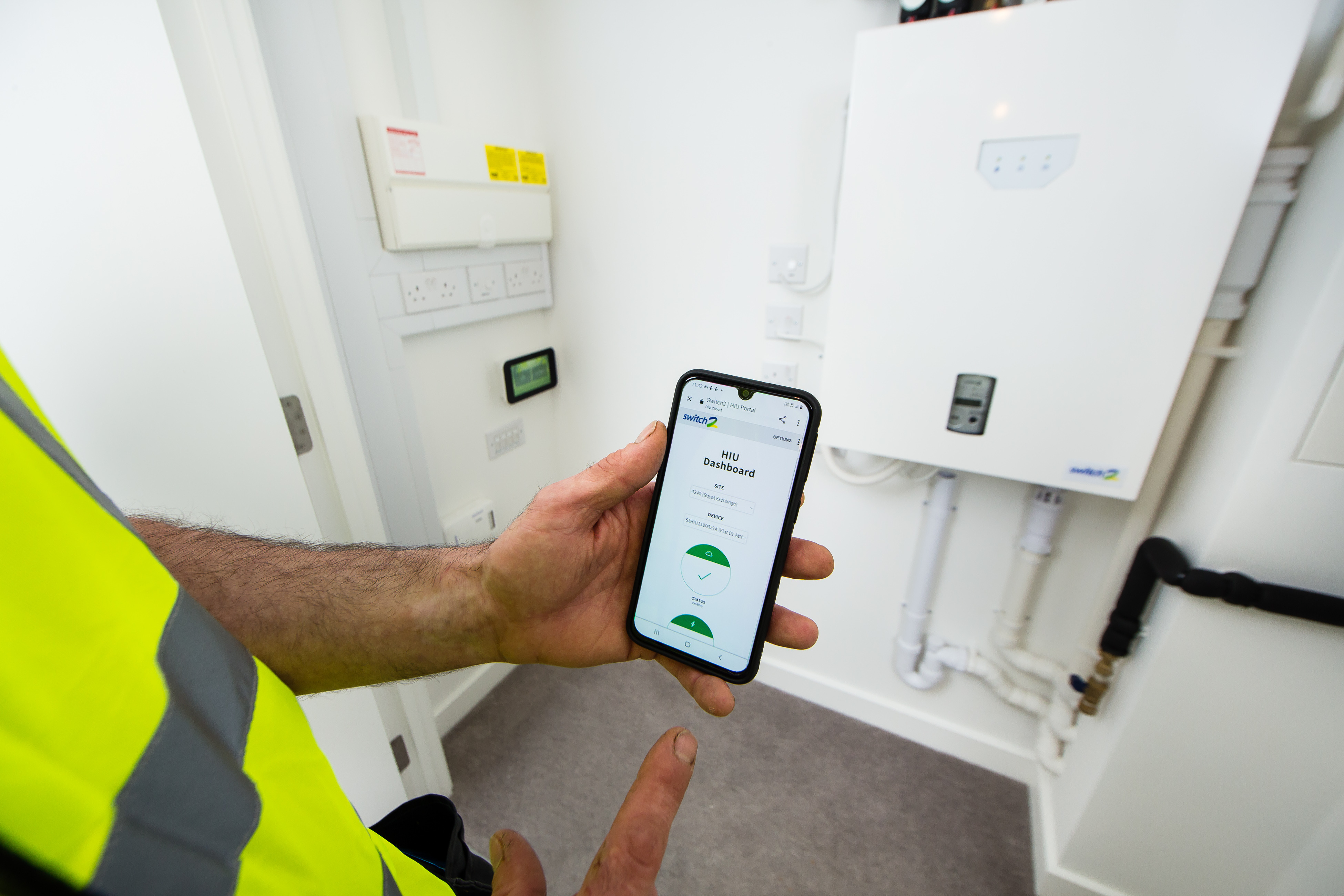As part of the launch of our next generation ICON HIU, we’re examining the role of HIUs in heat networks. In our first blog on the subject, we’ll be asking what exactly a Heat Interface Unit (HIU) is, and looking at the different types of HIU.
What is a Heat interface Unit?
Heat interface units (HIU) found in properties on district heating schemes is an important part of a heat network that controls the heat going into an apartment or house. A HIU has a similar function to a traditional individual gas boiler, but instead of burning gas to introduce heat into the property, it transfers heat from the heat network to the dwelling’s heating system.
The main function of a HIU is to control the flow, pressures, and temperature of the heating and domestic hot water circuits within the apartment. The HIU sits at the interface between the secondary heat network (sometimes this could be the primary heat network) and the tertiary heat network which consists of the domestic heating and domestic hot water circuits.
As well as ensuring the resident benefits from good quality heat and hot water, the HIU has a significant impact on the overall efficiency of the heat network by ensuring that heat is not wasted and return temperatures are low.
It should however be understood that the HIU relies on the tertiary system (the radiators and or the underfloor heating) being correctly controlled and, for example, it can only do its job correctly if the radiators are balanced! For this reason, Switch2 (and CIBSE CP1) recommend that self-balancing control valves are fitted to radiators.
What are the types of Heat interface Units?
The majority of HIUs currently on the market can be split into four main groups:
Twin Plate or ‘Indirect’ - A “twin plate HIU” is the most common type of HIU in the UK market today and is very similar, in principle, to a combi boiler. The twin plate HIU provides instant domestic hot water and has a circulation pump and expansion vessel for a pressurised radiator or underfloor heating system. Avoiding the need for a domestic hot water cylinder saves space and capital cost and the space heating plate provides a hydraulic brake between the primary/secondary and tertiary heating circuits; this feature does have pros and cons which we will discuss in the next section.
Single plate heat exchanger (PHEx) HIUs and HIUs without PHEx Direct heating and indirect domestic hot water – This type of HIU maintains a plate heat exchanger for instant hot water but dispenses with the space heating plate as well as the circulation pump and expansion vessel. This means that the primary water in the building passes through the radiators in the apartments, this has two main advantages, firstly it avoids the temperature drop (usually about 50C) across the plate heat exchanger which makes low temperature systems using heat pumps more efficient. Secondly, as the HIU does not contain a second plate heat exchanger, circulation pump and expansion vessel the unit is cheaper and often smaller. Direct space heating does of course have the disadvantage of exposing the tertiary system (radiators) to primary network water, pressures, and temperatures, so any leak may not be restricted to just water in the tertiary system, so care must be taken to specify compatible tertiary components. Other advantages are that the tertiary system benefits from primary system water quality control, no filling loop is needed.
Direct domestic hot water and indirect space heating – This configuration is used where domestic hot water cylinders are deployed. The space heating is indirect, with a PHEx, circulation pump and expansion vessel. Deploying domestic hot water again has its own pros and cons which include reducing the pipe sizes and generation capacity and resilience within the network on one hand but having to deal with the associated cost and management of legionella control within domestic hot water cylinders on the other.
Direct HIUs – The original HIU and for many years, before the introduction of braised plate heat exchangers, the only option. These HIUs do not have plate heat exchangers and have direct connections to the space heating and domestic hot water systems. These systems often had extremely basic controls, heating may have been controlled by the building operator or a single motorised 2 port valve operated by a mechanical thermostat within the apartment and a mechanical ‘Tapstat’ to control the flow from the network for domestic hot water cylinder. Some systems relied on a centralised hot water cylinder for distribution to multiple users.
The ICON HIU represents the next generation in HIU technology, and we will be examining the features and benefits of ICON, in our upcoming blog posts, as well as in our series of webinars.
You can learn more about ICON here.
If you'd like to sign up to the first instalment in our webinar series, you can register here.


